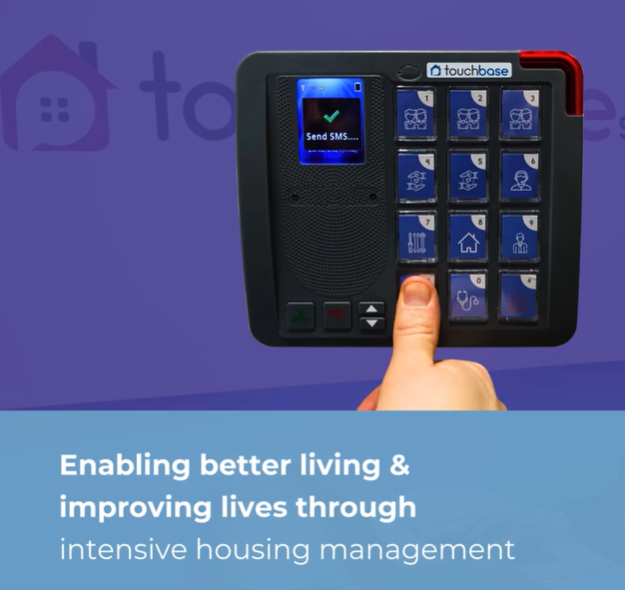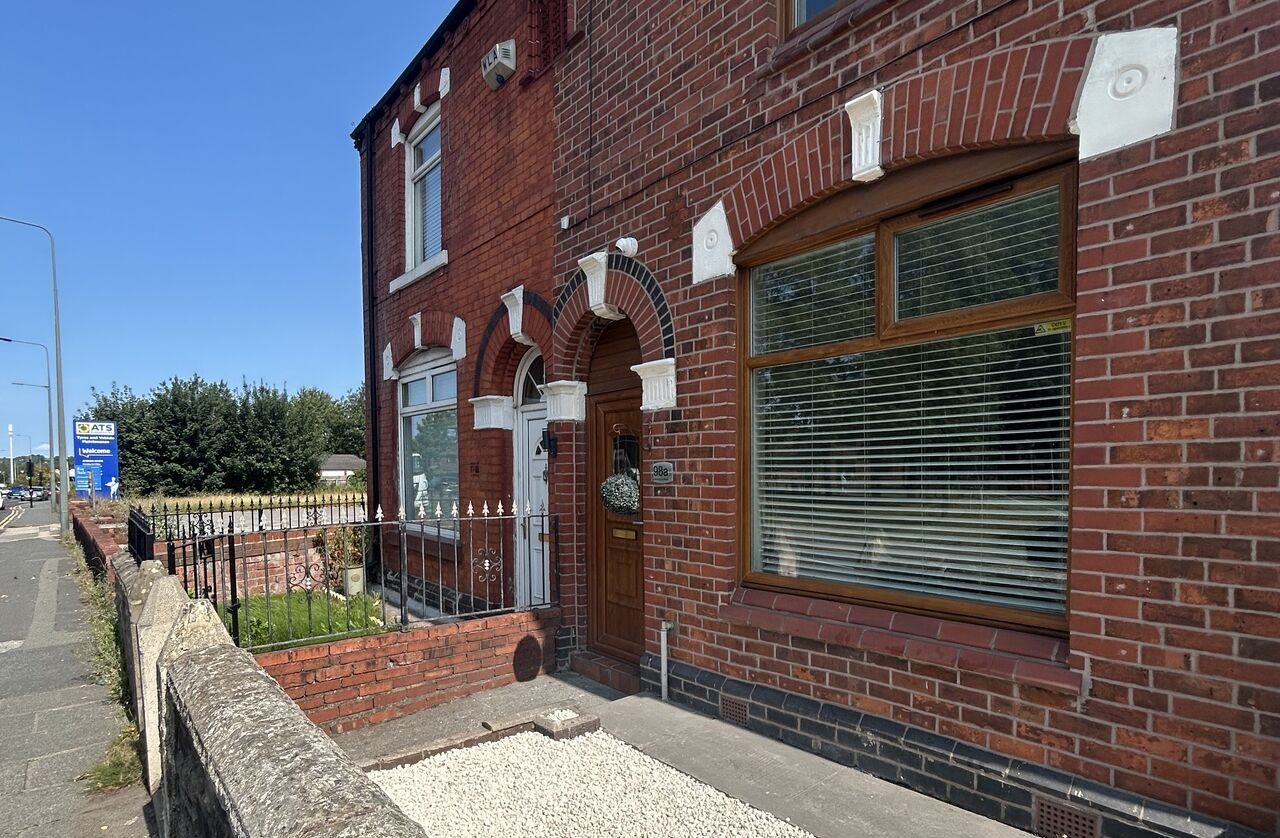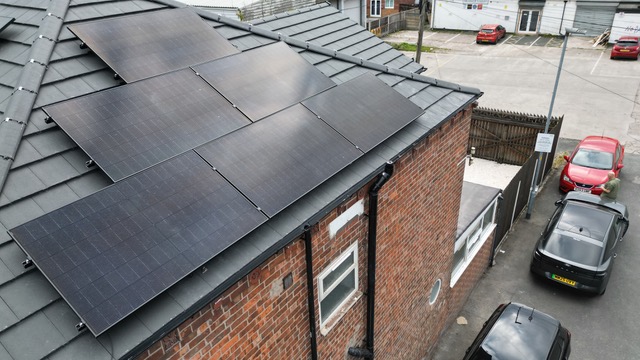Touchbase is transforming the supportive housing sector by enhancing communication and safety. Designed to improve the lives of individuals in assisted living, this innovative device offers direct access to a support network. While technology has made significant strides in elderly care homes, its development has been limited in specialised supported housing, Enabling Me developed Touchbase to bridge this gap. At Blueprint, we are proud to incorporate this technology to improve the wellbeing and independence of residents in supported housing.
What is Touchbase and how does it work in supported housing?
Touchbase is a versatile communication device that allows residents to take and receive calls from a pre-approved list of contacts, receive text messages, send a simple “I’m fine” alert to a social worker, contact emergency services and speak directly to the 24/7 support centre. The system ensures that tenants always have a way to reach help, enhancing their sense of security and independence.
The Touchbase Connect app means that the team can take maintenance calls 24 hours a day and seven days a week from tenants. Touchbase will assign a contractor to the issue after a call from the tenant who will then contact the tenant through the app to tell them when they will arrive to complete the work. A picture can be uploaded on the app by the contractor following the visit so that the housing association can see that the work has been done.

How Touchbase can improve the lives of tenants in supported housing
Touchbase puts the tenant at the centre by offering tailored solutions that meet individual needs. Whether this be unlimited calls to friends and family, support functions such as Talk to Frank, universal credit, or a button for contacting housing associations, this device can be tailored to ensure every resident’s needs are addressed.
The cost for Touchbase is recoverable through housing benefits across 67 local authorities, this prevents any financial strain from falling on the tenant, or housing provider. Being able to text family and friends for free improves tenants’ lives by giving them a sense of independence without financial pressure. As we are determined to align with the 17 UN Social Development Goals (SDGs) at Blueprint, this technology is helping us to meet SDGs such as no poverty, good health and wellbeing and reduced inequalities.
Limiting risks to create a safer environment for tenants
Touchbase technology limits risks for the tenant as it also allows doors to be unlocked remotely. Having the app connected to locks means that using an out-of-hours locksmith can be avoided, and the door can be unlocked remotely from the Touchbase Connect Call Centre. In the case of an emergency, this technology saves a great amount of time trying to open doors, and costs for locksmith call-outs. Mitigating risks without having to have a carer there on-site increases tenant independence without compromising safety.
The technology also includes a CO2 monitoring feature that helps detect unusual activity. By measuring CO2 levels, Touchbase can alert the team if there are signs of a tenant being unwell, if the tenant leaves the property, or even if there are more people in the home than expected- addressing potential safety concerns like “cuckooing”. This is where vulnerable people’s accommodation is used by gangs for illegal activities or abusive behaviour. By monitoring CO2 levels this device can alert the Touchbase Connect team if there are more people in the property than usual, ensuring that the safety of residents is constantly prioritised.
The future of assistive technology in supported housing
The future of assistive technology in supported housing promises to revolutionise the way care is delivered, enhancing independence and quality of life for residents. Innovations such as AI-powered monitoring systems, smart home devices and adaptive communication tools are creating more personalised and proactive support environments.
These technologies enable real-time health tracking, predictive maintenance of living spaces, and seamless connectivity between residents, caregivers, and families. As advancements continue, the integration of virtual reality for mental health support, robotics for physical assistance, and voice-activated systems for daily living tasks will further empower individuals to live with greater autonomy. Supported housing providers that embrace these cutting-edge solutions will not only improve outcomes but also set new standards in inclusive and forward-thinking care.
For more information, contact us here.


